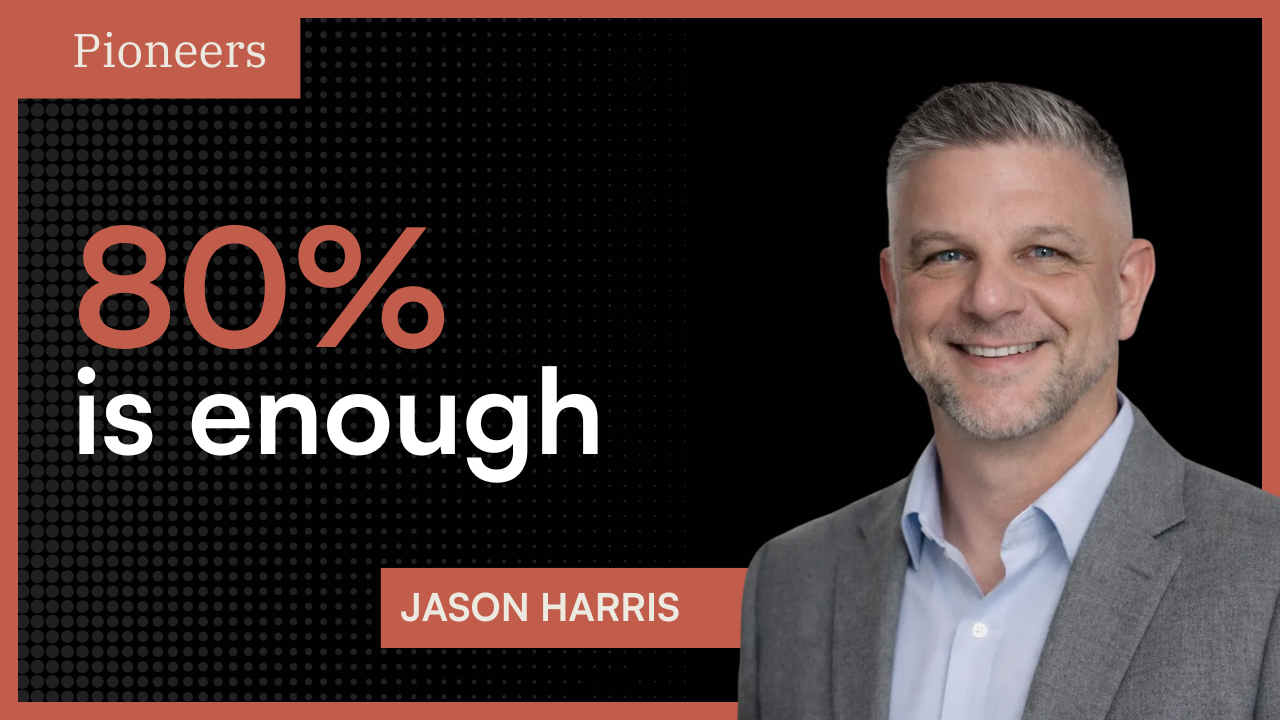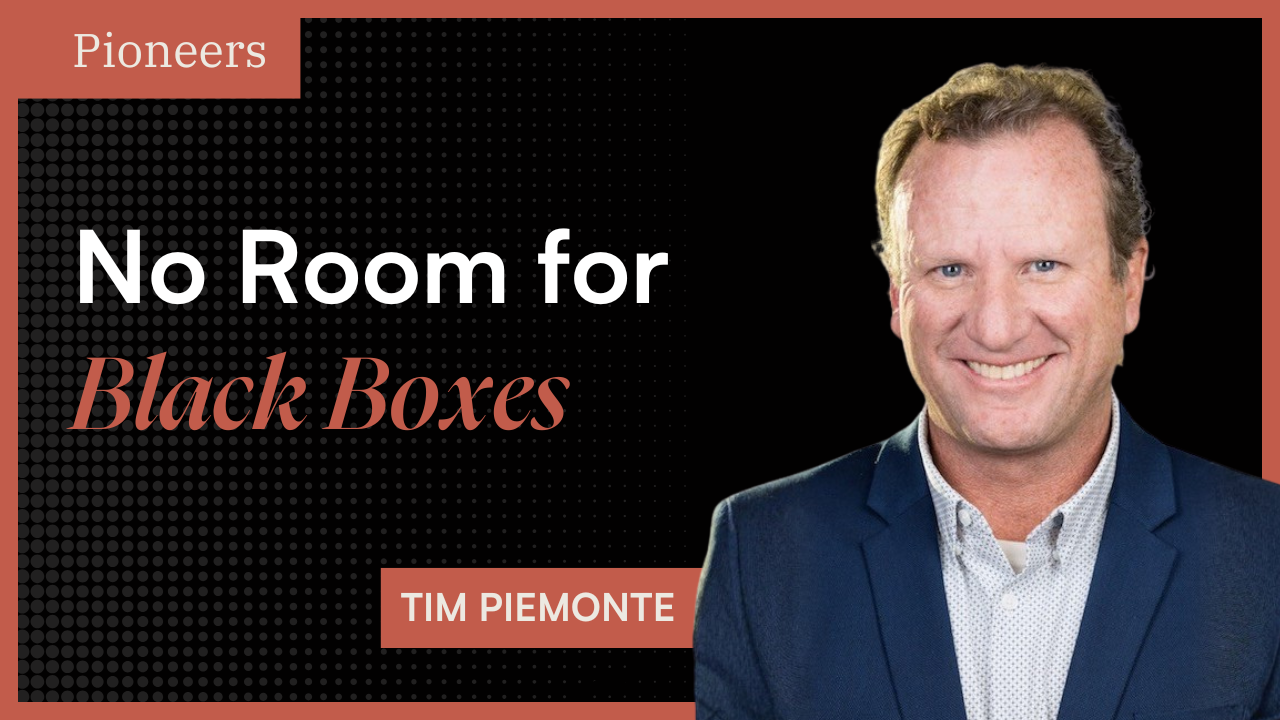This is a summary of an episode of Pioneers, an educational podcast on AI led by our founder. Join 3,000+ business leaders and AI enthusiasts and be the first to know when new episodes go live. Subscribe to our newsletter here.
TL;DR:
- Insurers need shared infrastructure to unlock real-time data sharing, faster claims, and more trusted customer interactions.
- RiskStream is creating common rails so insurers can build once and connect across the industry, avoiding duplicative integrations.
- Interoperability, not just innovation, is the missing piece for scaling AI, blockchain, and data-first workflows.
- Real adoption comes when tech enables things insurers already want to do better, faster, and cheaper.
- Industry-wide collaboration is hard but critical. “No one carrier can do this alone,” says Chris.
Before we dive into the key takeaways from this episode, be sure to catch the full episode here:
Meet Christopher - President of the Catastrophe Resiliency Council
Christopher McDaniel, President of Catastrophe Resiliency Council, brings decades of insurance innovation experience to his role leading industry-wide digital infrastructure development.
At The Institutes, he heads up RiskStream Collaborative, a member-led initiative focused on helping insurers collaborate more effectively using shared technologies like blockchain and APIs. Christopher is deeply committed to solving one of the insurance industry’s biggest bottlenecks: interoperability.
Rather than building isolated tools, he helps carriers design and adopt common frameworks that reduce duplication, speed up data exchange, and unlock new business models. From FNOL to proof-of-insurance, Christopher focuses on use cases that deliver real ROI across the value chain.
With a background in both operations and emerging tech, he helps translate abstract innovation into scalable, production-ready collaboration for insurers.
Interoperability Is the Foundation for Scalable Innovation
Christopher emphasizes that for insurers to scale technology, they need more than isolated innovations.
They need infrastructure that connects them.
“You can have a great solution, but if you can’t plug into other solutions, you’re kind of lost.” — Christopher McDaniel
Many carriers develop tools internally or adopt niche solutions, but without the ability to integrate with partners and industry platforms, those tools stall.
Christopher believes interoperability is what makes innovation useful at scale. Whether it is blockchain, AI, or API-based data exchange, none of it works unless systems talk to each other. “The key is to make these things reusable and connected,” he adds.
Innovation that stays inside one organization is not transformation. It is just a pilot.
RiskStream’s Goal: Build Once, Integrate Everywhere
RiskStream’s mission, according to Chris, is to create a shared digital infrastructure for the entire insurance industry.
“We’re trying to build it once and allow all the carriers to plug in,” he explains. This approach means carriers do not have to rebuild integrations every time a new solution or partner is introduced. Instead, they connect to a common framework.
“It is like building an interstate highway instead of a bunch of small roads,” says Chris. The benefit is not just speed, but consistency.
A standard set of rails can reduce onboarding time, lower integration costs, and make collaboration easier. “If everyone is using the same rails, then innovation can spread much faster,” he adds.
That is how industries move forward together.
“No one wins if everyone builds the same thing over and over.” — Ankur Patel
From Proof-of-Concepts to Production-Level Impact
Christopher is candid about one of the insurance industry’s biggest challenges: the inability to move from pilot to production.
“If it’s not used in production, it doesn’t matter,” says Chris. RiskStream’s model is designed to break that cycle by involving real stakeholders early and focusing on usable, repeatable solutions. He explains that many organizations spend too much time on conceptual projects that never leave innovation labs.
“It feels good to have a POC,” he says, “but unless it gets into the actual systems, it is not delivering value.” RiskStream emphasizes building with adoption in mind, not experimentation for its own sake. “It has to solve something people already care about,” Christopher explains.
That mindset turns pilots into real progress.
The Real Use Cases: FNOL, Subrogation, and Proof-of-Insurance
RiskStream is not chasing shiny tech. It is focused on solving well-known pain points with cross-industry relevance.
“Subrogation is something where everyone does it. So let’s fix it across the board,” says Chris. He also highlights proof-of-insurance and first notice of loss (FNOL) as core focus areas.
These are processes that every insurer deals with and that often involve multiple parties. By building reusable components and shared workflows, RiskStream reduces redundancy and improves accuracy.
“We are solving the same problems for multiple carriers at once,” he adds. These use cases are not theoretical. They are foundational moments in the insurance experience, and improving them helps both carriers and customers.
“It is about fixing what everyone already does,” says Chris.
Industry Change Requires Trust and Collaboration
Christopher believes real change in insurance requires collective effort.
“This is not something one carrier can go solve. It takes everybody.” — Christopher McDaniel
RiskStream is built around this principle, bringing carriers, vendors, and regulators together to design infrastructure that works for all. Trust is the critical ingredient. Without it, no one shares data or adopts shared systems.
“You have to get people in the room and align on the problem before you talk about the solution,” Christopher explains.
This model of pre-competitive collaboration helps the industry avoid duplication and lowers barriers to adoption.
“It is slow at first,” he admits, “but once trust is built, things move faster.” For Chris, shared progress depends on shared ownership.
The Real Work Begins After the POC
While proof-of-concepts get attention, Christopher makes it clear that the difficult work comes after. “The actual challenges show up when you try to scale,” he explains.
Getting something to work in a controlled environment is easy compared to deploying it across production systems, with live data, compliance requirements, and user expectations. Christopher encourages teams to design with that reality in mind.
“If you are not thinking about production from day one, your POC is just theater,” he says. At RiskStream, the focus is on designing for scale, not for show.
That includes rigorous testing, integration planning, and building for reuse. “You cannot learn what works until people are really using it,” Christopher adds.
That is when change actually starts.
.svg)



.svg)
.svg)

.svg)
.png)


